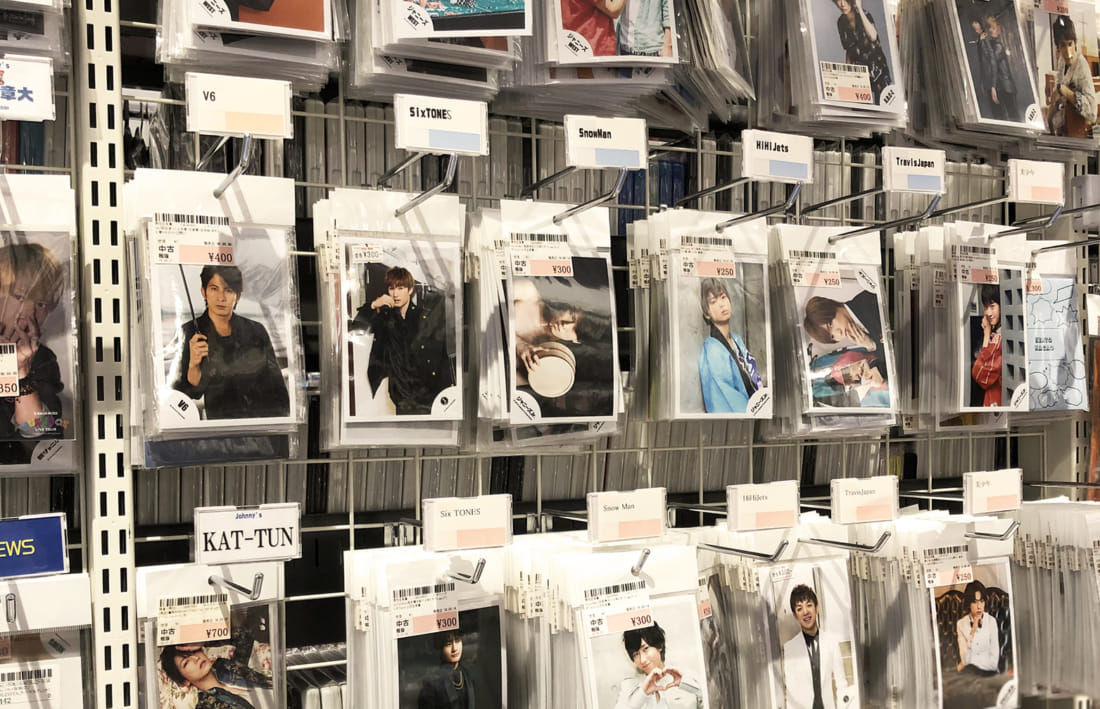From the looming disbandment of their most lucrative group to the death of the company’s patriarch and a drastic turnaround on promotional tactics, Japan’s top boy band producer, Johnny & Associates, is having a turbulent but invigorating year.
Over the past few weeks one of Japan’s biggest pop acts has shocked and delighted its fans around the world by finally launching an official YouTube channel and Instagram account, just a cool 20 years after making their debut.
Formed by the powerhouse male talent agency Johnny & Associates (known as Johnny’s), Arashi (meaning “storm” in Japanese) released their first single as a theme song for the Men’s Volleyball World Cup back in 1999. The five-member group, consisting of Satoshi Ohno, Sho Sakurai, Masaki Aiba, Kazunari Ninomiya and Jun Matsumoto, endured moderate success alongside fellow Johnnys groups throughout the early 2000s before rising to beloved household name status.
As they approached their 10th anniversary, popular acting credits, prime time TV spots and advertising deals piled up on top of record-breaking sales and expansive tours across Asia. Another decade of success followed as their radio-ready pop, playful entertainment style and friendly mass appeal gradually conquered the hearts of everyone from kindergarteners to grandparents, displacing the slowly self-destructing SMAP and taking the crown as the nation’s favorites.
So why were they so late to join two of the biggest social media platforms in the world?
The Restricted Lives of Japanese Idols
In order to understand the cultural impact of Arashi’s heavily overdue foray into SNS, you need to first consider what being a Japanese idol group actually entails. The allure and omnipresence of idols in East Asia is frequently misunderstood and underestimated but in the simplest of terms, idol culture operates as an entity far beyond a musical genre. The talents are all-rounders expended to sing, dance, act and entertain – although none of these need to be done particularly well, as long as effort and charm can be observed.
While there are many face value fans simply there for the music, the majority of consumers, from casual to hardcore, invest and participate in a mutually beneficial system where continued support and regular consumption is rewarded with gratifying content (from TV shows to personal appearances) and a sense of shared achievements. The artist’s primary job is arguably to reflect and sustain the “personality” that is seeded to the fans, who in turn perpetuate and cultivate these increasingly appealing identities. It’s largely the same system that now sees a generation of SNS influencers and YouTubers utilizing online platforms to reach vast audiences and foster lucrative careers (regardless of skills, location or experience).
In light of this, it’s intriguing that Japan’s biggest boy band producer spent so long doing everything in its power to keep its talent restricted, unshared and offline.
While the Korean pop industry jumped at the chance to reach a global audience, disseminating images and videos across social media and even offering direct interaction between fans and its stars, Johnny’s maintained absurdly tight control. No full music videos were ever shown outside of official DVDs, no personal SNS content was allowed aside from limited blogs only accessible to fan club members, and a heavily enforced image ban was so strict that you couldn’t even find a single thumbnail image of any Johnny’s talent on their own website until 2011.
For years these restrictions worked well in the domestic market, trapping fans into a system that guaranteed TV ratings and constant profit through magazine sales, concert tickets and abundant merchandise, but as the internet rapidly expanded and image-heavy content, social media marketing and viral trends became the norm, Johnny’s was in danger of becoming an increasingly quaint and antiquated pop culture oddity (and not just due to its penchant for dressing young men in feathers and sequins).
Change is on the Horizon
The YouTube channel news was actually not the biggest shock to hit Arashi fans this year. In January, the company unexpectedly announced that the band and its official fan club (boasting almost 2.5 million members) would cease activities at the end of 2020. Group leader Ohno expressed a desire to leave the group and try living a normal life – an understandable wish for someone who joined the agency at 13 years old.
In keeping with the group’s image of genuine camaraderie, the other four members opted not to continue without him, and will presumably continue on with their individual careers. Despite the news of disbandment, Arashi’s storm has continued to captivate: they are celebrating their 20th anniversary with a new Best Of album, an ongoing 50 date dome arena tour and even a large scale national touring exhibition continuing into next year.
The move by Johnny’s to suddenly give free access to select cuts from the group’s prolific 20-year career and present their new music video publicly is a huge development for the notoriously insular company that has held a monopoly over the Japanese entertainment industry and strict control over its artists and their images for decades. Perhaps creating a digital archive now is a thoughtful thank you gift to fans, something to sweeten the impending break up, but cementing and showcasing Arashi’s legacy also seems like a well-timed display of achievement for a company who only recently became invested in utilizing online potential.

The Latest Developments: Johnny Kitagawa Dies But the Show Goes On
In early 2018 Johnny’s lifted their long-standing media ban, allowing the press to photograph and publish pictures of their artists, and only a few months later announced the launch of the official Johnny’s Jr YouTube Channel, with the aim to showcase their developmental talent.
Johnny’s Juniors are the young members of the agency who have yet to officially debut in the music industry. Ranging from fresh tweens and teens recruited from mass auditions to patient twentysomethings still hoping their group might become a fixed unit, Juniors primarily work as backing dancers for concerts, special stage shows and musicals alongside established seniors, also appearing on their own long-running weekly TV show and recent streaming developments, recruiting a loyal fan base well before ever making it to an elusive CD release.
Debuting Johnny’s acts get to join the legendary cannon of boy bands and idols dating back to the 1960s including Four Leaves, Hikaru Genji, V6, Kinki Kids, News, Kanjani 8, KAT-TUN, Hey! Say! JUMP, Sexy Zone and most recently King & Prince, all of whom were handpicked and masterminded by the company’s founder, the late and controversial mogul Johnny Kitagawa, who passed away in June 2019 at age 87.
Yet even before the death of its patriarch, big changes were already being made in the Johnny’s realm. In addition to the company’s drastic turnaround on photo sharing and YouTube endeavors, former Tackey & Tsubasa member and popular Johnny’s talent Hideaki Takizawa established the Johnny’s Island subdivision, before being swiftly promoted to vice president of Johnny & Associates, fulfilling a long-speculated prophecy.
Better Late Than Never
With “Tackey” now at the helm (at least in the public eye), and 50 years younger than his predecessor, the company has a rejuvenated image and its “better late than never” modern developments are successfully enticing both new and veteran fans to discover and invest in its upcoming stars.
The Johnny’s Jr channel focuses on content by five established junior groups including SixTones (pronounced “stones”) and Snow Man who are set to debut simultaneously on January 22 next year under Sony Music and Avex respectively. Nevertheless, the novelty of a friendly double-debut rivalry between two of the country’s biggest record labels is far less notable than the potential and curious future of a new generation of Johnny’s groups who have already been permitted to actively promote and interact using SNS.
Johnny’s Jr YouTube content for the past year has been unlike any previous Johnny’s output. For the most part it’s low budget, unassuming and surprisingly accessible. Instead of scouring the web for elusive live footage or bootlegs of short appearances on over-produced variety shows buffered by famous comedians, you can now see the boys attempt viral video challenges and games, watch their dance rehearsals and enjoy extended documentary-style episodes. This provides the intimacy of reality and the illusion of self-produced content that’s free, on demand and in high definition.
There may still be some jarringly old-fashioned theatrics embedded deep in the Johnny’s oeuvre but as TV viewership declines and endless social streaming content prevails, acknowledging that their future stars need to be modern, spontaneous and more independent is a smart and long-overdue move – and it doesn’t hurt if they can also still do backflips and tap dance.
The Arashi Exhibition “Journey” continues at Sony Music Roppongi until November 30 2019








